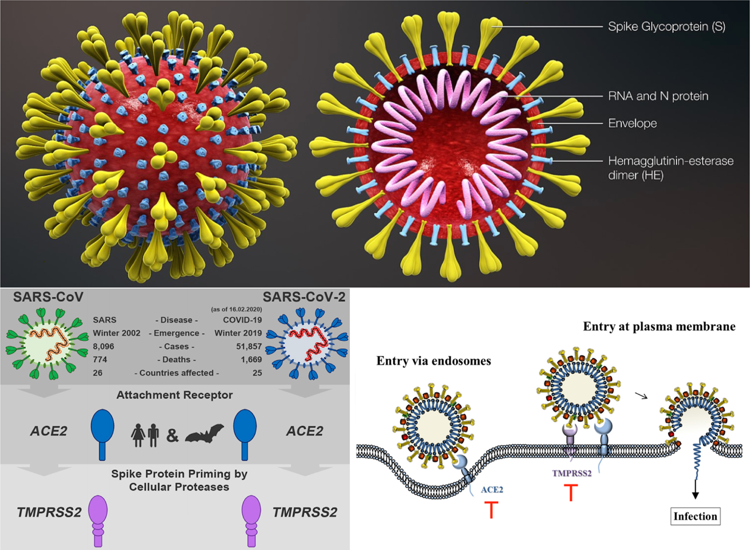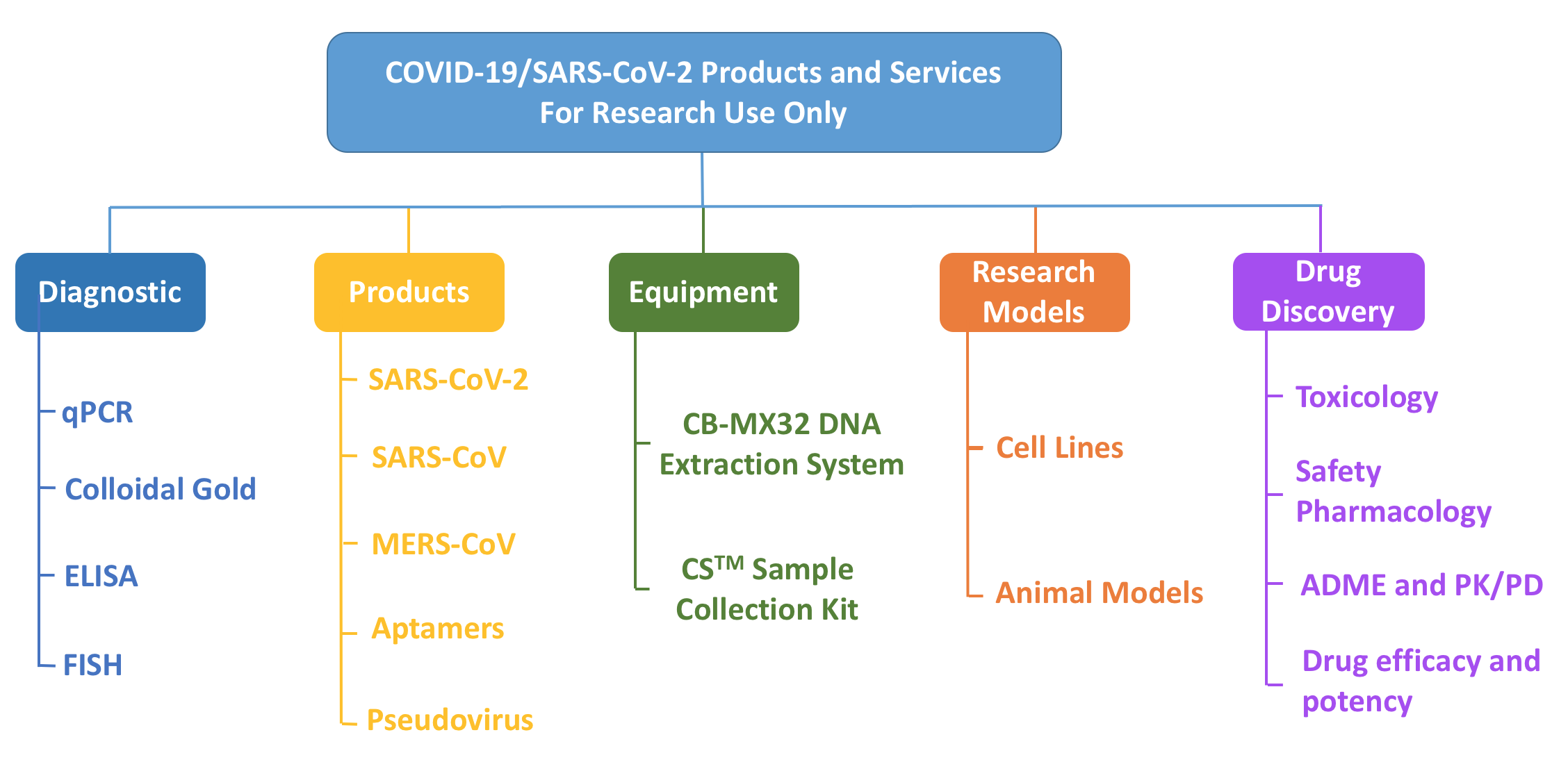Research Solutions for COVID-19/SARS-CoV-2
Since December 2019, pneumonia epidemic of novel coronavirus infection has come into our sights. Currently, coronavirus pandemic has become a global concern, with huge impacts on countries and millions of people around the world. Scientists strive to fight back and urgently need to understand how this novel coronavirus infects people, especially at the cellular and molecular level, so as to better target SARS-CoV-2 and find related treatment strategies. During this global health emergency, we at Creative Bioarray make every endeavor to support researchers working in this field all over the world.
 Fig.1 The structure of SARS-CoV-2 and its corresponding receptors for cell entry and activation.
Fig.1 The structure of SARS-CoV-2 and its corresponding receptors for cell entry and activation.
Upon coronavirus infection, spike protein of SARS-CoV-2 utilizes angiotensin-converting enzyme 2 (ACE2) as the binding receptor for cell entry. Moreover, SARS-CoV-2 also requires serine protease TMPRSS2 for S protein priming to activate viral infection. Therefore, ACE2 and TMPRSS2 are vital targets for the novel coronavirus. Drug discovery can start with the compounds that inhibit the interaction of spike protein and ACE2/TMPRSS2.
Creative Bioarray is a market leader in offering products and services for research that focuses on drug discovery. We are capable of providing a variety of cell lines and animal models that are well-suited for SARS-CoV-2 drug development, as well as performing downstream drug testing. With extensive experience, our technical experts are happy to employ the cutting-edge techniques and platform to progress your research project and meet every scientific requirement of yours. We are committed to offering the most qualified products and the best services to accelerate SARS-CoV-2 drug development.

Cell Lines for SARS-CoV-2 Research
We are able to offer most of the cell lines which have been used for research on coronavirus, particularly for SARS-CoV-2.
- ACE2 Enhanced Cell Lines
- TMPRSS2 Enhanced Cell Lines
- ACE2-TMPRSS2 Co-Expressing Cell Lines
- Spike Protein Stably Expressing Cell Lines
- ACE2 Stably Expressing Cell Lines
- ACE2 KO Cell Lines
- TMPRSS2 KO Cell Lines
Cell-Based Drug Discovery Services for SARS-CoV-2 Research
- Identification of cells targeted by SARS-CoV-2
- Generation of SARS-CoV-2 pseudovirus infected cell lines
- Characterization of SARS-CoV-2 pseudovirus infected cell lines
- Anti-SARS-CoV-2 treatment strategies
- Preclinical evaluation of drug candidates
- Neutralization of virus infectivity studies
- Cell-Cell membrane fusion studies
- Inhibition of syncytium formation studies
- Toxicology studies
- Safety pharmacology studies
- PK/PD studies
In Vivo Models for COVID-19/SARS-CoV-2 Research
Creative Bioarray is capable of developing SARS-CoV-2 pseudovirus infected animal models, including multiple species, mice, rats, guinea pigs, hamsters, rabbits, non-human primates, and ferrets. Notably, our technical experts have also developed transgenic animal models which can express human receptor ACE2 or ACE2-KO animal models for the research of pathogenesis and treatment of SARS-CoV-2.
We are trying our best to help scientists fight back coronavirus
- To understand the pathology of coronavirus
- To accelerate the antivirus drug and vaccine development
- To limit the rate of infection spread and symptoms of COVID-19
We'd love to hear from you
If you have any questions and requirements, feel free to contact us. Please let us know your research interests. We are looking forward to working with you.
References
- Hoffmann, M., et al. (2020). SARS-CoV-2 Cell Entry Depends on ACE2 and TMPRSS2 and Is Blocked by a Clinically Proven Protease Inhibitor. Cell, 181(2), 271–280.
- Lip, K. M., et al., (2006). Monoclonal antibodies targeting the HR2 domain and the region immediately upstream of the HR2 of the S protein neutralize in vitro infection of severe acute respiratory syndrome coronavirus. Journal of virology, 80(2), 941-950.
- Lukassen, S., et al. (2020). SARS‐CoV‐2 receptor ACE2 and TMPRSS2 are primarily expressed in bronchial transient secretory cells. The EMBO Journal.
- Matsuyama, S., et al. (2020). Enhanced isolation of SARS-CoV-2 by TMPRSS2-expressing cells. Proceedings of the National Academy of Sciences, 117(13), 7001-7003.
- Simmons, G., et al. (2013). Proteolytic activation of the SARS-coronavirus spike protein: cutting enzymes at the cutting edge of antiviral research. Antiviral Research, 100(3), 605–614.